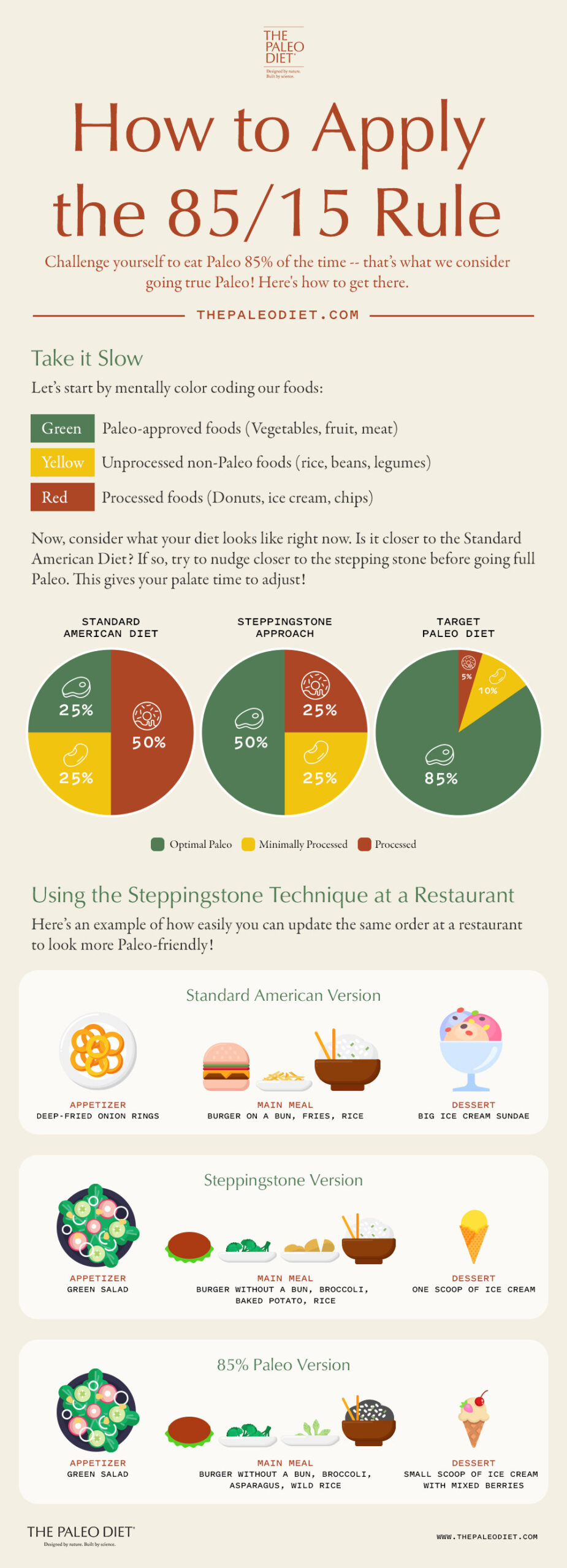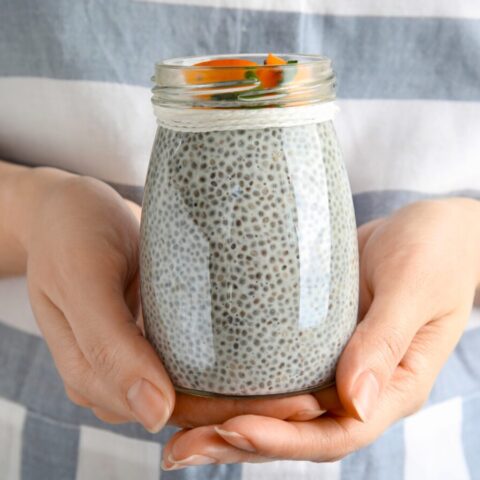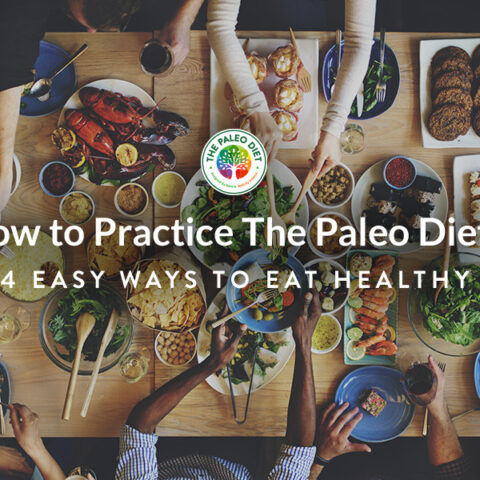How to Start Eating Healthy: Our 85/15 Guide to Natural, Healthy Eating

For any diet to improve your health, compliance is vital. But it’s hard to stick with a diet that feels too restrictive. Enter the 85/15 rule. We at The Paleo Diet® believe that people can still achieve excellent results if they stick with their diet just 85% of the time.
Why does 85% work? Because, for most of us, we still reap the rewards of a healthier diet simply by replacing many unhealthy foods with Paleo foods. This increases the nutrient density of your diet and helps to keep you feeling full and satisfied. Conversely, trying to be strict 100% of the time often leads to failure, self-doubt, and ultimately abandonment of the diet. Thus, we felt that 85% mark can work as a better long-term strategy.
But for many of you starting out, even 85/15 may feel too hard. This is where we remind you that any improvement is just that—an improvement. If someone is eating only 25% Paleo and they can double that to 50% without too much difficulty, they will still reap benefits.
While some people enjoy the challenge of jumping into the deep end and going right to 85/15, for many of us starting in the shallow end and working our way down is easier and can be more successful in the long run. Remember, all improvements are good improvements. So, let’s discuss how to dip the toes in and get there more manageably.
The Benefits of Taking It Slow
Don’t feel like you must start eating healthy 85% of the time right from the start. Even a small shift in the way you eat will make a big difference—and feeling better can help motivate you to keep moving forward.
One way to think about the 85/15 rule is to focus on how you eat non-Paleo for that 15% of the time. Ideally, you want to think of it as the 85/10/5 rule, where the non-Paleo category is split into a goal of 10% minimally processed food, like legumes and dairy, and 5% processed food, like packaged snacks and desserts. Categorizing your non-Paleo foods into “minimally processed” and “processed” can help remind you that not all non-Paleo foods are highly processed foods, and that there are tiers of healthy foods instead of just good or bad foods.
In fact, it might help to mentally color code foods according to traffic light colors: green for Paleo, yellow for unprocessed non-Paleo foods, and red for processed foods.
Let’s consider people eating a typical Standard American Diet. They probably eat 25% of Paleo-friendly foods, 25% of minimally processed non-Paleo foods like grains, legumes, and dairy, and a whopping 50% of highly processed food. To go from this method of eating to a strict diet can be a challenge!
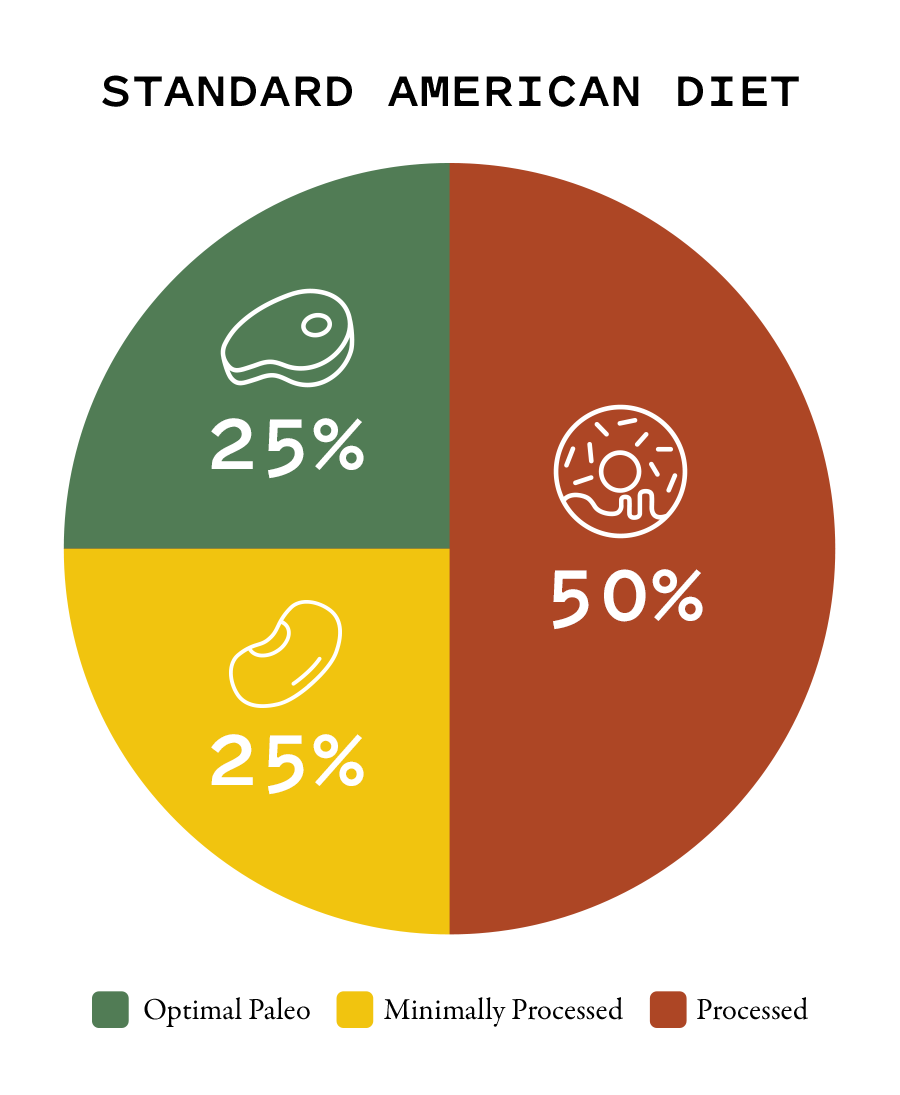
If your diet resembles the typical Standard American Diet, you don’t have to jump straight into eating Paleo 85% of the time. Here’s an achievable steppingstone approach that simply replaces 25% of the processed food with optimal Paleo foods. It’s a big step to start eating healthy that we recommend, and it can lead to big improvements in your health and well-being.
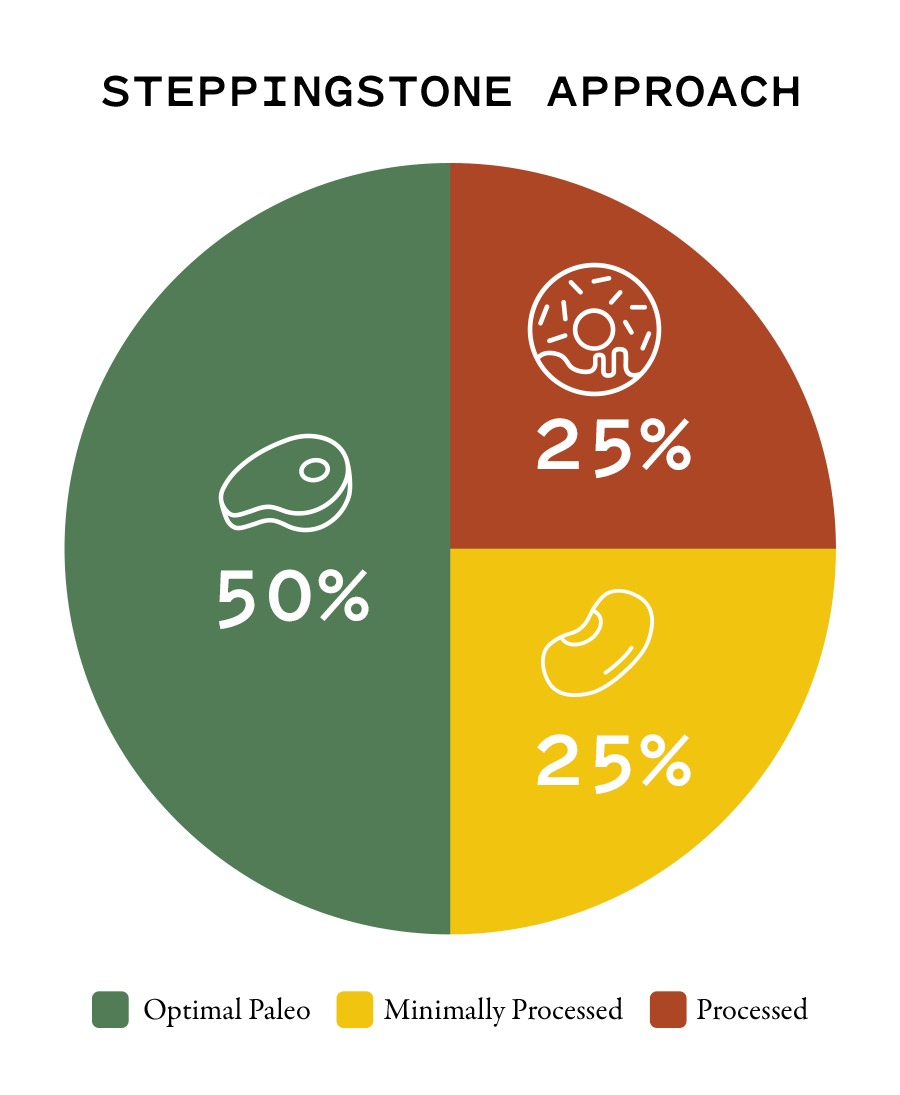
The Ultimate Goal of 85/10/5
If you use the steppingstone approach, you’ll find it far more attainable to get to the ideal 85/10/5 ratio.
Why go this route instead of changing your diet cold turkey? Because if you make the shift to eating Paleo 50% of the time, your palate will change, and you’ll actually want to eat those healthier foods. Plus, you’re sure to see breakthroughs in your health and weight that will motivate you to move up in compliance.
Many people may end up short of the final goal and cap out at around 75% optimal foods, 15% minimally processed foods and 10% processed foods. But if this is a ratio that you can stick with, do it. We still see it as a successful dietary change!
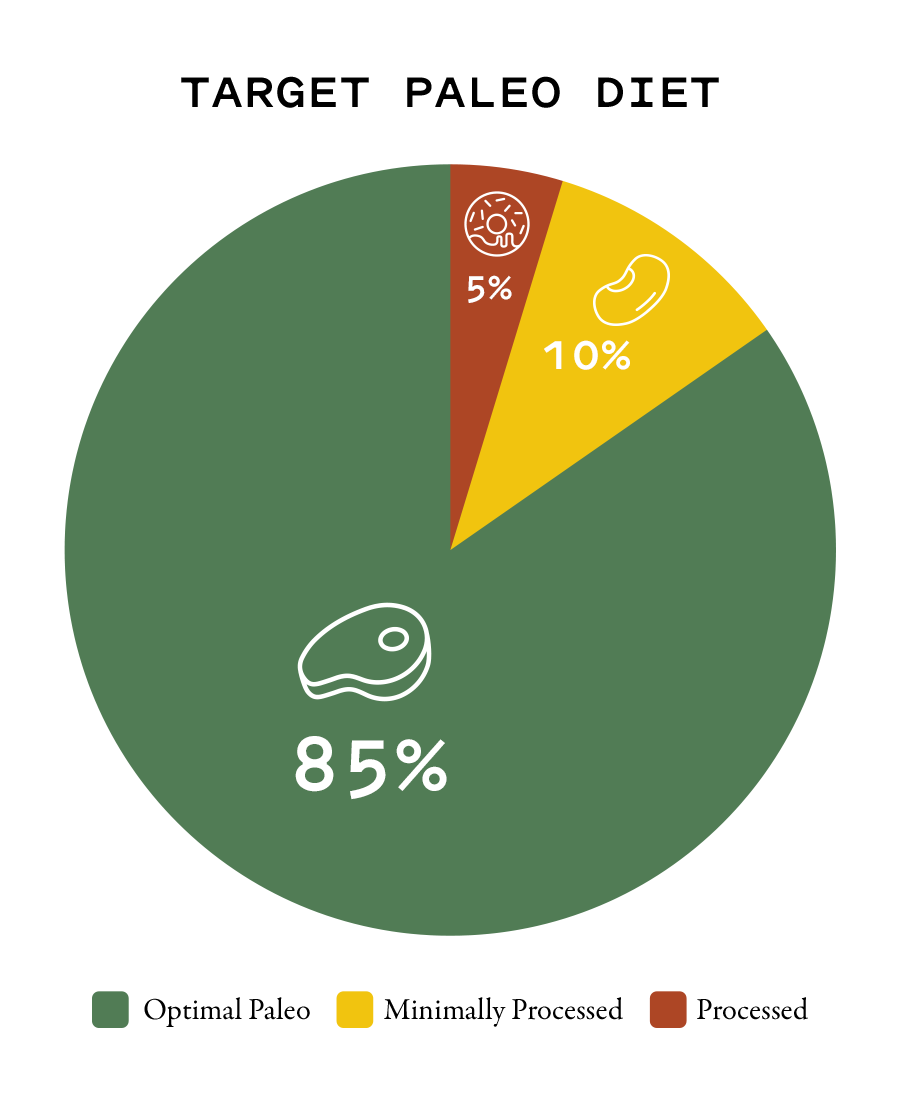
How to Ease into 85/10/5
To help you incorporate this steppingstone approach into your diet, let’s take an example of going out to eat at a restaurant. Before your decision to start eating healthy, a typical menu choice might have been the following:
- Appetizer: Deep-fried onion rings
- Main meal: Grass-fed beef burger with a bun, potato fries, and wild rice
- Dessert: Full-dairy ice cream
While that might sound like a very tasty meal, it’s unfortunately very close to the Standard American Diet ratio of 25/25/50 described above.
Our first goal is to halve the quantity of highly processed foods and replace them with optimal foods. An easy way to accomplish this:
- Appetizer: Swap the onion rings for a field greens salad
- Main meal: Keep the grass-fed beef burger but skip the bun, keep the rice, replace the fries with a baked potato, add a side of broccoli
- Dessert: Full-dairy ice cream (because you’ve been good!)
This now looks a lot more like the 50/25/25 breakdown represented in Figure 2. And you’re still getting to eat the foods you enjoy with a few conscious swaps and additions.
In time, and as your palate changes, you can improve even further to reach the 85/10/5 goal as shown below:
- Appetizer: Field greens salad
- Main meal: Grass-fed beef burger without a bun, broccoli, asparagus, and wild rice
- Dessert: Small scoop of full-dairy ice cream with mixed berries
And who knows, by this point your palate may have changed enough that you don’t want to add rice and actually prefer berries instead of the ice cream!
While thinking of the 85/10/5 rule by volume is helpful when you are just getting started on The Paleo Diet, an easier and more healthful approach long-term is allowing 3 “cheat” meals each week. Two can include non-Paleo unprocessed foods, while one can incorporate processed foods. Choose the approach that works for you. The ultimate goal is to reduce your processed food consumption and increase your whole, natural food consumption.
The Secret to Start Eating Healthy
Success with the 85/10/5 rule still requires some discipline and compliance, and the best way to stick with any healthy lifestyle long-term is to know which foods are appropriate. If you’re unsure about which foods are best for you, be sure to check out the Is It Paleo? section of our site so you can make better food choices that will ultimately help you improve your health and vitality.
